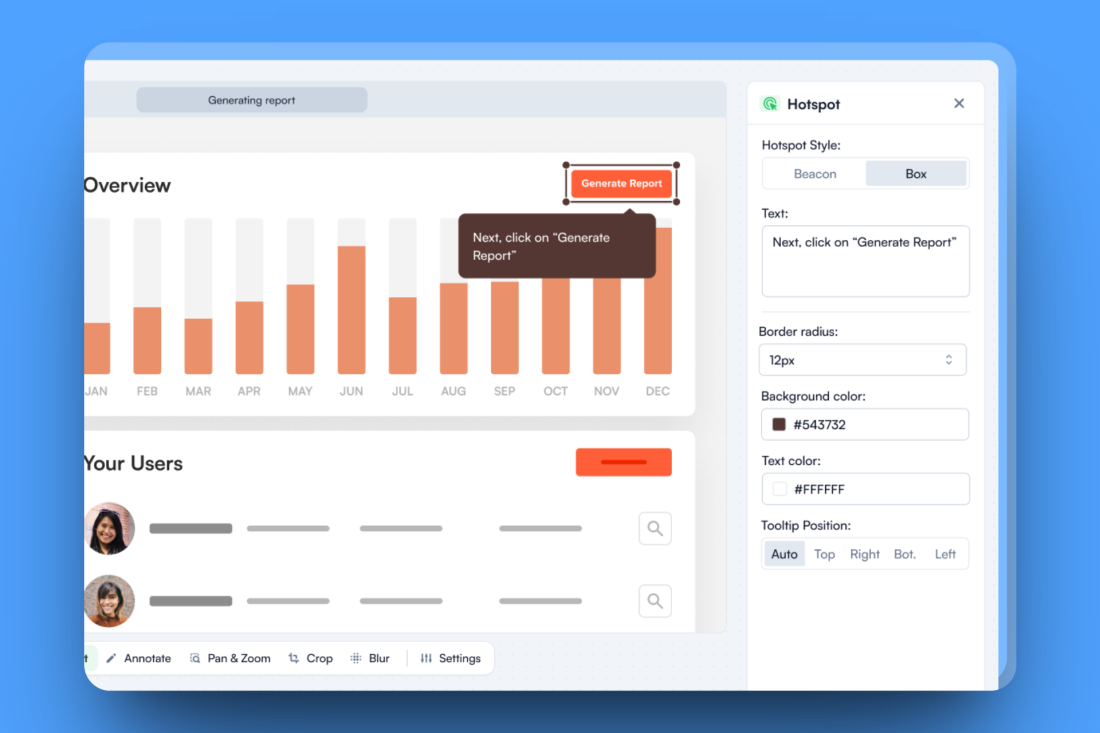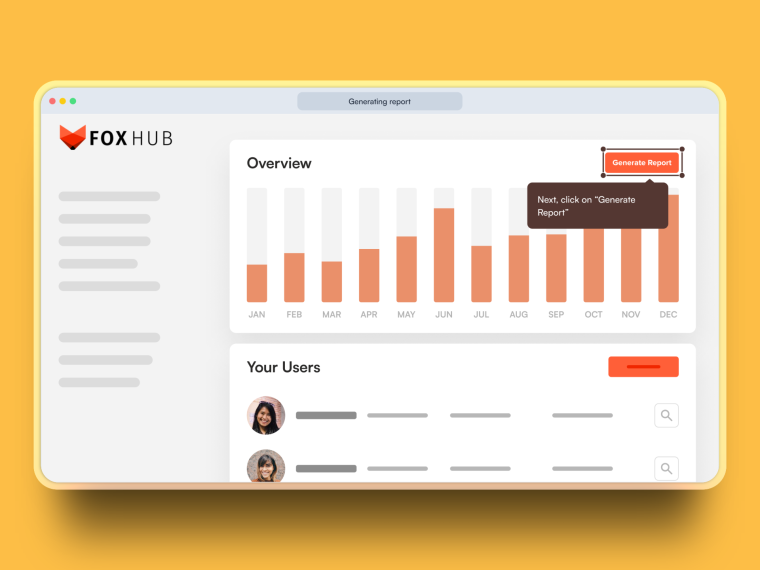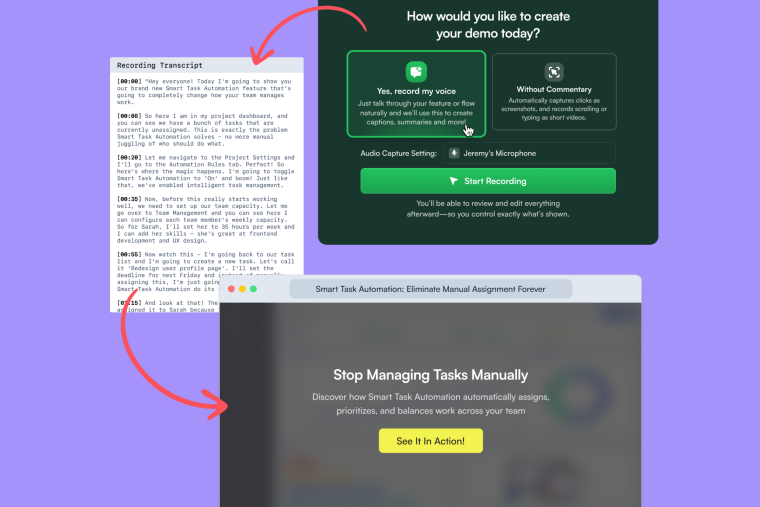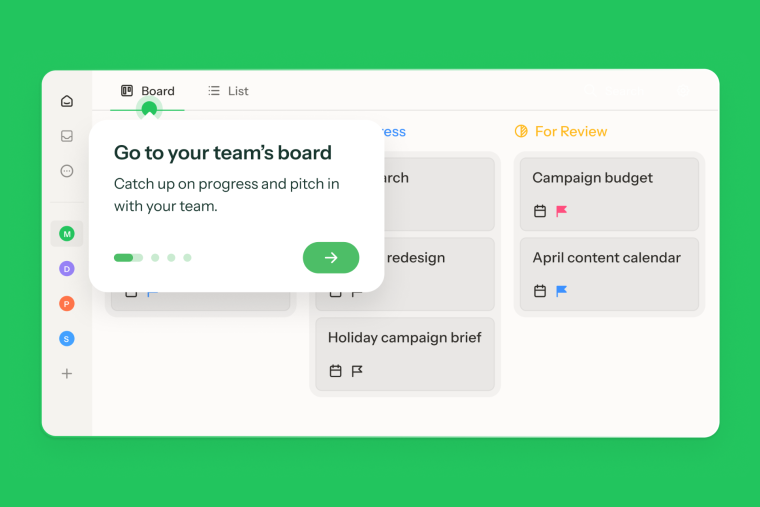In 2025, the way SaaS companies introduce and activate users has changed entirely. The old playbook—gated demos, lengthy sales calls, and generic free trials—no longer meets the expectations of today's self-serve, research-driven buyers. Interactive demos have emerged as the strategic lever that product-led growth (PLG) teams use to accelerate adoption, reduce churn, and build truly product-led businesses.
Interactive demos aren't just a marketing tactic. They're a complete rethinking of how users discover, understand, and commit to your product—before they ever create an account or talk to sales.
This guide unpacks the science, strategy, and step-by-step execution of interactive demos for PLG, with frameworks and insights grounded in real data.
What Are Interactive Demos? (And Why They Matter for PLG)
Interactive demos are live, clickable product experiences that allow users to explore core features and workflows in a guided, hands-on manner—without needing to create an account or speak with sales. Unlike static screenshots or pre-recorded videos, interactive demos put users in the driver's seat, simulating real product usage and outcomes.
The Evolution from Static to Interactive
Traditional product demos were passive: slide decks, videos, or sandbox environments that failed to capture the nuances of real user journeys. Interactive demos are dynamic and personalized. They can be embedded on your website, shared as links, or triggered in-app, adapting to user roles, interests, or behaviors.
Why This Matters for Product-Led Growth
In a PLG model, the product itself is the primary vehicle for acquisition, activation, and expansion. Interactive demos are the ultimate "try before you buy" experience—removing friction, building trust, and accelerating the path to value. According to Navattic's 2025 State of Interactive Product Demo report, 29.2% more B2B websites now use a "Take a Tour" CTA compared to 2023—a clear signal that the market has shifted.
Static vs. Interactive Demos
Feature | Static Demo (Video / Screenshot) | Interactive Demo (Live / Guided) |
|---|---|---|
User Control | 🎬 Passive | 🕹️ Active |
Personalization | 🔹 Low | 🔸 High |
Data Collection | ⚙️ Limited | 📊 Robust |
Engagement | ⏳ Short-lived | 🔁 Sustained |
PLG Alignment | ❌ Weak | ✅ Strong |
Key takeaway: Interactive demos are the new standard for PLG teams seeking to deliver value faster and more authentically—before, during, and after sign-up.
The Science Behind Interactive Demos in Product-Led Growth
Why do interactive demos work so well for PLG? The answer lies in psychology, user behavior, and the mechanics of learning.
Cognitive Load Theory
Research shows that active, hands-on learning increases retention and reduces cognitive overload compared to passive formats. When users can click, explore, and make decisions in a safe environment, they build mental models faster—leading to higher confidence and faster adoption.
Learning Retention Rates
According to the "learning pyramid" model, people retain up to 75% of what they practice through hands-on experience, versus just 10% of what they read or 20% of what they hear. Interactive demos leverage this principle, turning product education into an experiential journey.
Real User Behavior Data
The data is compelling. According to Navattic's analysis of over 28,000 demos, the top 1% of interactive demos achieve an 84.4% engagement rate and a 54% click-through rate. Even more striking: research from HowdyGo found that 89% of visitors will interact with a product demo on a dedicated landing page, and inbound leads are 70% more likely to sign up for a trial after viewing a demo.
PLG Methodology Alignment
PLG is about empowering users to discover value independently. Interactive demos align perfectly with this ethos, enabling users to "try before they buy"—not just after sign-up, but even before entering an email. This shift moves the "aha moment" earlier in the journey, shortening the time-to-value and increasing the odds of long-term retention.
As Wes Bush, author of "Product-Led Growth," notes:
"The best way to sell your product is to let users experience its value firsthand. Interactive demos are the bridge between curiosity and commitment."
Key takeaway: Interactive demos harness proven learning science and user behavior data to drive faster, stickier adoption—making them a cornerstone of modern PLG strategy.
5 Ways Interactive Demos Pump Up Your PLG Funnel
Interactive demos aren't just a nice-to-have—they're a force multiplier across every stage of the PLG funnel. Here's how:
1. Accelerate User Onboarding (Reduce Time-to-First-Value)
Instead of a generic welcome email, new users are greeted with a guided, role-based demo that walks them through key workflows. According to Arcade's analysis of 37,000 demos, new users are 80% more likely to perform multiple activation steps after engaging with an interactive demo.
2. Increase Feature Discovery and Adoption
Contextual demos surface advanced features based on user behavior, nudging users to explore what's most relevant to them. The top 10% of interactive demos use 1.4 times more branching paths than the median demo, allowing users to choose their own journey.
3. Reduce Support Tickets and Friction
Embedded demos and tooltips proactively address common questions, reducing the need for support tickets. One company reported a 22% drop in support tickets after implementing contextual feature demos.
4. Enable Self-Serve Expansion and Upsells
Users can explore premium features or new modules via interactive demos, without waiting for a sales touch. Survey respondents in Navattic's 2025 report noted that demos increased their win rate by 20-30% and helped shorten sales cycles.
5. Improve User Retention and Engagement
Ongoing, personalized demo experiences keep users engaged and informed about new capabilities. Interactive demos drive 7.2x more engagement than traditional product marketing videos.
Key takeaway: Interactive demos are a high-leverage investment, driving measurable improvements in activation, adoption, support efficiency, expansion, and retention.
The Complete Interactive Demo Implementation Framework
Ready to put interactive demos to work in your PLG strategy? Here's an actionable, 8-step framework:
1. Audit Your Current Onboarding Experience
Map out your existing onboarding flows and identify friction points. Gather user feedback and support data to pinpoint where users drop off.
2. Map the User Journey and Identify Demo Opportunities
Break down the user journey into key stages: awareness, activation, adoption, expansion. Identify where interactive demos can remove friction or accelerate value.
3. Define Demo Objectives and Success Metrics
Set clear goals: increase activation rate by X%, reduce support tickets by Y%. Choose KPIs: time-to-value, feature adoption, NPS, conversion rates.
4. Create User Personas and Demo Variations
Segment users by role, use case, or behavior. Design demo flows tailored to each segment for maximum relevance. According to Navattic's research, demo centers that organize multiple demos by use case or persona saw 3.75x increase in usage compared to the previous year.
5. Script and Storyboard the Demo Flow
Outline each step, call-to-action, and branching path. Keep flows concise and focused. The best-performing demos have an average of 12 steps and dialog boxes shorter than 200 characters.
6. Build and Test Interactive Elements
Use no-code tools to create, preview, and iterate on demos. Test with real users and gather feedback for refinement.
7. Integrate with Existing Product Adoption Tools
Connect demos to your onboarding, analytics, and CRM platforms. Ensure seamless in-app experiences—no context switching.
8. Launch, Measure, and Iterate
Roll out demos to target segments. Monitor performance, run A/B tests, and optimize based on data.
Timeline Estimate: Most teams can launch their first interactive demo in 2-4 weeks, with ongoing optimization thereafter.
Key takeaway: A structured, data-driven approach ensures your interactive demos deliver real business impact—not just a flashy experience.
PLG Interactive Demo Tools
Choosing the right interactive demo platform is critical for PLG success. Here's how to evaluate your options through a product-led growth lens:
Feature Category | Chameleon | Navattic | Storylane | Arcade |
|---|---|---|---|---|
No-Code Builder | 🟢 Yes, visual/in-app builder | 🟢 Yes, HTML / visual builder | 🟢 Yes | 🟢 Yes |
Analytics Depth | 🟢 Advanced | 🟢 Advanced | 🟠 Basic / mid-tier only | 🟠 Moderate |
Integration Capabilities | 🟢 Robust | 🟠 Moderate to strong | 🟠 Moderate | 🟠 Moderate |
Personalization / AI-Driven | 🟢 Yes (AI + dynamic) | 🟠 Mostly rules/manual | 🟠 Manual / setup-based | 🔴 No strong evidence of AI personalization |
In-App Experience | 🟢 Embedded / seamless | 🔴 Primarily demo environment | 🔴 Hosted demo pages | 🟠 Semi-embedded / demo embeds |
Segmentation / Targeting | 🟢 Advanced (behavior, events) | 🟠 Medium | 🟠 Basic | 🔴 Limited evidence of deep segmentation |
A/B Testing (native) | 🟢 Yes (built-in) | 🟢 Yes | 🔴 No | 🔴 No public support (test externally) |
PLG / Product-Led Suitability | 🟢 High | 🟠 Medium | 🟠 Medium | 🟠 Medium-High (for demos, but lacks in-app depth) |
Key Considerations:
No-Code Builders: Empower product and growth teams to launch demos without engineering.
Analytics: Look for platforms with granular engagement tracking, funnel analysis, and cohort reporting.
Integration: Ensure compatibility with your onboarding, CRM, and analytics stack.
Personalization: AI-powered segmentation and dynamic content are must-haves for mature PLG organizations.
ROI: Prioritize tools that drive measurable improvements in activation, adoption, and expansion.
Chameleon's Edge
Chameleon stands out for its seamless in-app experiences, advanced AI-powered segmentation, and deep analytics—enabling PLG teams to deliver, measure, and optimize interactive demos at scale. Unlike standalone demo tools, Chameleon integrates tours, tooltips, surveys, and launchers into a unified product adoption platform, ensuring users experience consistent, contextual guidance throughout their journey.
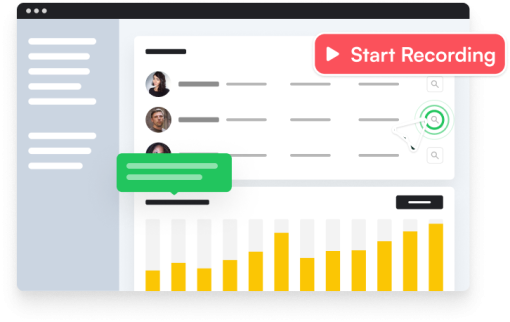
Turn viewers into do-ers with interactive demos
Create engaging, clickable product demos in minutes—no prep needed. Show, don't tell, and drive 200% higher conversions like our customers do.
Advanced Strategies: Personalization & Segmentation
For mature PLG organizations, the next frontier is hyper-personalized, segmented demo experiences.
Role-Based Demos
Tailor demo flows to user roles (e.g., admin vs. end user) for maximum relevance. One Navattic customer reported that their demo center, which organizes demos by role, generated $1M in new pipeline, with a demo-to-opportunity conversion rate 3x higher than that of isolated product pages.
Behavioral Triggers
Launch demos based on in-app actions, usage patterns, or lifecycle stage. Research shows that ungated demos have a 10% higher engagement rate than gated demos.
Dynamic Content
Use AI to adapt demo content in real time, surfacing the most relevant features or use cases. The top 1% of demos saw a 68.7% increase in click-through rate compared to the previous year.
AI-Powered Personalization Trends
Modern platforms, such as Chameleon, leverage machine learning to segment users and deliver personalized demo experiences at scale. This not only increases engagement but also surfaces expansion opportunities by matching users with the features most likely to drive value.
As Elena Verna, PLG Advisor, notes:
"Personalization is the new standard for product adoption. The more relevant your demos, the faster users reach their 'aha moment'—and the more likely they are to stick around."
Measuring Interactive Demo Success: KPIs That Matter
To prove the ROI of interactive demos, you need to track the right metrics—connecting demo engagement to business outcomes.
Primary Metrics
Activation Rate: % of users who complete key onboarding actions after demo
Time-to-Value: Average time from demo to first meaningful outcome
Feature Adoption: % of users engaging with highlighted features
Secondary Metrics
Onboarding Completion: % of users finishing guided flows
Support Ticket Volume: Change in "how do I?" requests post-demo
Expansion Revenue: Upsell/conversion rates from demo-driven flows
Leading Indicators
Demo Engagement: Click-through, completion, and drop-off rates
NPS/CSAT: User satisfaction post-demo
Benchmarking Data
According to Navattic's 2025 report analyzing the top 1% of interactive demos, best-in-class SaaS teams see:
84.4% engagement rate (users who get past step 1)
61.6% completion rate
54% click-through rate
2.1 minutes average time spent
For the top 25% of demos, the benchmarks are:
50.1% engagement rate
28.9% completion rate
12.8% click-through rate
Conclusion
Interactive demos are no longer a "nice-to-have"—they're a strategic imperative for product-led growth. By empowering users to experience value before, during, and after sign-up, interactive demos accelerate onboarding, boost adoption, and unlock new revenue streams.
The data is clear: Teams using interactive demos see 70% higher trial sign-up rates, 80% more activation actions, and 7.2x more engagement than traditional videos. The most successful PLG teams treat demos as a core part of the user journey, leveraging advanced personalization, robust analytics, and seamless in-app experiences.
With the right strategy and tools, you can turn interactive demos into your product's most powerful growth engine. The question isn't whether to invest in interactive demos—it's how quickly you can implement them to stay ahead of the competition.
Ready to see interactive demos in action? Explore Chameleon's interactive demo to experience AI-powered product adoption firsthand.

